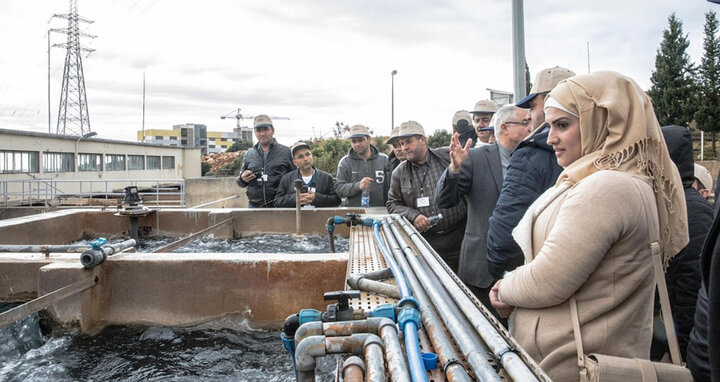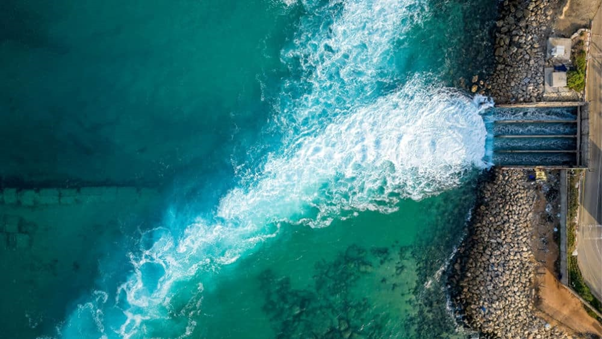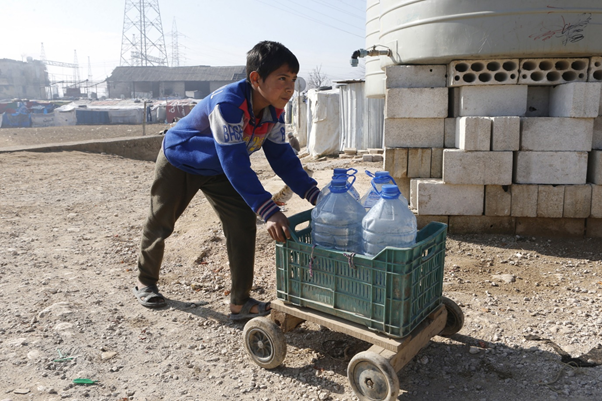What are Tel Aviv’s goals for launching a water war against Lebanon and Arab countries?

| The hostile actions of the Zionist regime against Lebanon continued in 1402 and in the last one year, in addition to direct terrorist and anti-security threats, this regime has also harmed Lebanon in the field of water security. |
Mehr News Agency, International Group: The hostile actions of the Zionist regime against Lebanon continued in 1402 and this regime in the last year, in addition to direct terrorist and anti-security threats, in the field of security Water has also damaged Lebanon. Beirut officials have said that over the past year, dozens of border towns and villages in southern Lebanon have been suffering from severe water shortages. Because the Israeli army has destroyed most of the infrastructure and drinking water supply and purification facilities. In the fall of 1402, the Cheshme Wazani water pumping station project, the largest water pumping station in southern Lebanon, was destroyed due to Lebanese air attacks. The right to pump water from the Hasbani River has been one of the most important disputes between Lebanon and Israel since 2002.
Ahmad Al-Mohammed, from the local Lebanese authorities, announced that the Israeli attacks damaged the electrical equipment, pumps and distribution networks of the water project and led to the stopping of water pumping to villages and There are many cities in the border region. The regime has not even allowed the technical workers to go to the region to repair the facilities and has prevented the reconstruction of the facilities with rain cannons.
Also, Ali El-Zein, the former head of the Jebel Amal Federation of Municipalities, who once supervised the construction of the water project until its opening, announced that this project is about 12,000 cubic meters per day. It used to pump water and supply water to 70 villages and cities, but now, following the destruction of the aforementioned facilities, a severe drinking water crisis has occurred practically on the border line. Meanwhile, the dangerous military conditions prevent southern residents from accessing the river and springs.
The air and artillery attacks of the Zionist regime on the Lebanese border caused a shortage of drinking water, and the border residents, by collecting rainwater and drawing it through plastic pipes from the back They provide the water they need from the roofs of their houses in a limited and difficult way. In other areas, Lebanese villagers have resorted to digging wells, which endangers their health. According to the data of the Ministry of Interior of Lebanon, the population of the southern border region of Lebanon is approximately 13,3600 people, which are scattered in 83 towns and villages, and now at least half of this population is having problems with drinking water supply.
Israel’s blue threat against Jordan
It is not only Lebanon that is facing Israel’s brutal and inhuman actions in the field of water security. Jordan also has such a situation. In 1402, Jordan faced the problem of water shortage many times due to Israel’s insidious actions. And that is in a situation where the average daily consumption of water in Jordan is only 70 liters and the average standard of the World Health Organization (WHO) is nearly 150 liters. Since the signing of the peace agreement between Jordan and Israel in 1994, the Zionist regime has committed to provide between 25 and 50 million cubic meters of water to Jordan every year, but it has repeatedly violated this commitment and put Jordan in a difficult situation. The issue of water is now at the center of geopolitical tensions between Israel and Ayman Safadi, the Jordanian foreign minister, has announced that he cannot sit next to a Zionist minister and sign a water and electricity agreement when Israel continues to kill the people of Gaza.
Amer Sabaeleh, a geopolitical expert in Jordan believes that the peace between Israel and Jordan is fragile because Jordan is facing a deep crisis and has to leave an important part of supply the water it needs from Israel.
Israel’s efforts to increase water security have faced difficult conditions in addition to Lebanon, Syria, Palestine and Jordan. The Zionist regime has openly interfered with the water resources of Jordan and Syria and has cut the right to half, contrary to the 1994 agreement on the division of the water of the Jordan River. Meanwhile, the Palestinian Authority has a small share of the mountain water basin of the West Bank of the Jordan River and is facing a serious problem. On the other hand, the occupation of the Golan Heights has deprived Syria of the water resources of the Galilee Lake. In this situation, Israel has a strong motivation for technological development in order to improve water security and has also taken measures in the field of desalination to easily supply the water it needs. Relying on the high capacity of desalination, Israel is in ideal conditions, but it has made life difficult for the people of Lebanon, Palestine and Jordan.
Israel relies on two main groundwater aquifers, including the coastal groundwater aquifer and the mountain groundwater aquifer, both of which are located under Gaza and under the West Bank. Israel’s surface waters are mainly concentrated in the north and east, and tampering with the sources of the Jordan River has made the situation difficult for Jordan and Syria. Without increasing its physical borders, Israel has expanded its domestic water resources and reduced the risk of international conflicts over water. Also, Tel Aviv has created a project called the National Water Carrier, which includes canals, pipelines and pumping stations, and transfers water from the Sea of Galilee from the northern water-rich areas to the central and southern parts.
The Golan Heights in the southwesternmost part of Syria has been occupied by the Zionist regime since 1967. The Golan Heights is a strategic plateau located between Israel and Syria and overlooks southern Lebanon. This area is only 70 kilometers away from Damascus. The height of the Golan Heights varies between 1000 and 1200 meters above sea level. From a military point of view, this area is considered a strategic height. Golan was occupied by Israel in 1967 and despite the issuance of UN Resolution 242, the Zionist regime has not left there. One of the reasons for Israel’s interest in the Golan is that this region is the source of water resources for the neighboring regions and a very important source for the lands of this region, and it is very rich in terms of surface and underground water resources. Lake Masada in the north of the city of Quneitra and east of Masada, and Lake Tiberias or the Sea of Galilee between the Golan and Palestine and rivers with high water such as the Jordan River in the west of the Golan and Roqad in the north of the Golan have caused the Zionist regime to remain in this region as an occupation.
A review of the anti-human political views of the Zionist regime shows that this regime started the water war half a century ago and today, over time, the water war has become a possible issue in the Middle East. Yes, Israel will not give up the water resources of the Golan. Moreover, at the first meeting of Zionists in Basel, Switzerland, in August 1897, it was mentioned that without water, the establishment of the Zionist government would not be possible.




